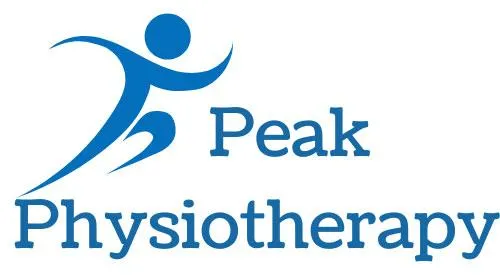
Strengthening and Stabilizing the Shoulder: Physiotherapy Exercises for Long-Term Relief
Shoulder pain can arise from a variety of conditions, including rotator cuff injuries, impingement syndrome, and poor posture. Whether you’re recovering from an injury or simply want to prevent future issues, strengthening and stabilizing the shoulder is key to long-term relief. At Peak Physiotherapy in Galway, we offer specialized physiotherapy exercises designed to improve shoulder function, build muscle strength, and prevent pain from recurring. In this blog post, we’ll explore why shoulder stabilization is crucial and share effective exercises that can help.
Why Strengthening and Stabilizing the Shoulder is Important
The shoulder joint is one of the most mobile joints in the body, allowing for a wide range of motion. However, this mobility comes at the cost of stability, making the shoulder susceptible to injury. The muscles surrounding the shoulder, including the rotator cuff and scapular stabilizers, play a crucial role in maintaining this stability. Weakness in these muscles can lead to poor shoulder function, increased risk of injury, and chronic pain.
By strengthening the muscles around the shoulder joint and improving its stability, you can:
Prevent future shoulder injuries
Improve posture and movement patterns
Alleviate chronic pain
Increase overall strength and flexibility
Support proper alignment during physical activities
Effective Physiotherapy Exercises for Shoulder Strengthening and Stabilization
At Peak Physiotherapy, we tailor exercises to each individual’s needs, but the following exercises are commonly used to strengthen and stabilize the shoulder joint:
1. Scapular Retraction (Shoulder Blade Squeeze)
The scapula (shoulder blade) plays a critical role in shoulder stability. Strengthening the muscles around the scapula can prevent shoulder pain and improve function.
How to do it:
Sit or stand with your back straight.
Pull your shoulder blades together as if you’re trying to pinch a pencil between them.
Hold for 5 seconds, then relax.
Repeat for 10-15 reps, 2-3 sets.
This exercise targets the muscles between the shoulder blades (rhomboids and middle trapezius), which are key for stabilizing the shoulder joint.
2. External Rotation with Resistance Band
External rotation is essential for strengthening the rotator cuff, particularly the infraspinatus and teres minor muscles, which help stabilize the shoulder during arm movements.
How to do it:
Attach a resistance band to a sturdy object at elbow height.
Stand with your elbow bent at 90 degrees and close to your body.
Hold the band with your hand and rotate your arm outward, keeping your elbow tucked in.
Slowly return to the starting position.
Perform 2-3 sets of 12-15 reps on each side.
This exercise helps strengthen the rotator cuff muscles, reducing the risk of impingement and rotator cuff injuries.
3. Shoulder Abduction with Dumbbells
Shoulder abduction is a great exercise to target the deltoid muscles, which are responsible for lifting the arm away from the body.
How to do it:
Stand with your feet shoulder-width apart and hold a light dumbbell in each hand.
Keeping a slight bend in your elbows, raise your arms to the side until they are level with your shoulders.
Lower the weights back down slowly.
Perform 2-3 sets of 10-12 reps.
This exercise strengthens the deltoid muscles, helping to improve shoulder function and prevent instability.
4. Shoulder Press
The shoulder press is an excellent exercise for building strength in the upper body, specifically targeting the shoulders, upper back, and arms.
How to do it:
Sit or stand with your back straight, holding a dumbbell in each hand.
Lift the weights to shoulder height with your elbows bent at 90 degrees.
Press the dumbbells overhead until your arms are fully extended.
Lower the weights back to shoulder height.
Perform 2-3 sets of 8-12 reps.
This exercise helps improve overall shoulder strength, which is essential for shoulder stabilization and injury prevention.
5. Wall Angels
Wall angels help to improve mobility and stability in the shoulder by targeting the upper back and shoulder blade muscles.
How to do it:
Stand with your back against a wall, feet about 6 inches away from the wall.
Press your lower back, upper back, and head against the wall.
Raise your arms to a “W” shape, with elbows bent at 90 degrees.
Slowly raise your arms above your head, keeping your elbows and wrists in contact with the wall.
Lower your arms back to the starting position.
Repeat for 10-15 reps.
Wall angels strengthen the muscles in the upper back and shoulders, helping to maintain proper shoulder alignment.
6. Shoulder Shrugs
Shoulder shrugs help relieve tension and strengthen the muscles around the neck and upper back, improving shoulder posture and stability.
How to do it:
Stand with your feet hip-width apart and your arms by your sides.
Lift your shoulders up towards your ears, hold for 2-3 seconds, then slowly lower them back down.
Repeat for 2-3 sets of 10-12 reps.
This simple exercise targets the upper trapezius muscles, promoting proper posture and shoulder mobility.
Tips for Shoulder Rehabilitation
Start with low resistance: Begin with lighter weights or resistance bands and gradually increase intensity as your shoulder muscles get stronger.
Focus on controlled movements: Perform each exercise slowly and with control to avoid injury.
Rest and recover: Ensure you give your shoulder adequate rest between workouts to allow for muscle recovery.
Consistency is key: Regularly incorporating these exercises into your routine will help improve shoulder stability and strength over time.
When to Seek Physiotherapy for Shoulder Pain
If you’re experiencing shoulder pain, weakness, or limited mobility, it’s essential to seek professional help. A physiotherapist can assess your condition and develop a customized rehabilitation plan tailored to your specific needs. Physiotherapy not only helps you recover from shoulder injuries but also provides strategies to prevent future pain and improve shoulder function.
At Peak Physiotherapy in Galway, we specialise in treating shoulder pain and guiding you through effective exercises that promote long-term relief. Contact us today to schedule a consultation and take the first step toward a stronger, healthier shoulder.



